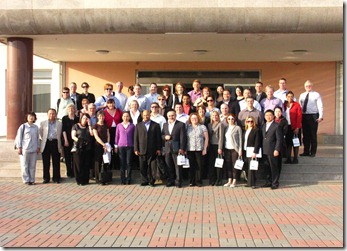I live in the Midwest, close enough to Joplin, Missouri to know where it is and to know people who call that city home.
The devastation from Sunday’s record tornado was shocking and sad; and the story has dominated TV, online, and print news as people struggle to make sense of the depth of the losses. Predictions of continued bad weather this week seem like a low blow from Mother Nature to the residents of “tornado alley.”
Disasters have a sensational quality to them in today’s 24/7 media world. Look, for example, at the big name news anchors and personalities rushing to broadcast from small town Joplin, Missouri: Brian Williams, Anderson Cooper, Diane Sawyer, Harry Smith, Al Roker of the Today Show, and others.
The surreal photos of the town post-tornado and the media’s hype of and about them might lead us to miss something more subtle yet important in this story: the power, dignity, and importance of resilience.
Resilience is the ability to cope, adapt, and strengthen in the face of challenge, trauma, or stress. It’s a learned skill that increases with use.
Students of leadership spend countless hours and dollars trying to acquire resilience. I’ve spoken in past posts about it as the #1 Leadership Skill (see January 19 in the blog archives) and about how current and aspiring leaders can build theirs (January 21).
Midwesterners, if the people of “tornado alley” are any example, have a natural resilience – and they, thankfully, have lots of it.
Those who lost everything this weekend quickly turned their energies to helping others and to planning to “get things back in order.”
A young Red Cross volunteer from Joplin listened calmly last night as an incredulous Anderson Cooper questioned her repeatedly about why and how she was able to do that when she had personally just lost everything. The young woman seemed genuinely surprised by Cooper’s question. She had “only lost a lot of stuff,” she noted. Then looking Anderson square in the eyes she added, “And so what?” Helping was the right thing to do. She never thought of anything other than finding the Red Cross station and doing her part.
Interviewee after interviewee talked with Cooper about salvaging what they could, rebuilding, coming back stronger, solving the problems Mother Nature had dealt them. They were thankful their losses were not greater. Many spoke of hope. Their beliefs in their capacity to rise to the challenge were obvious.
To quote Dave Adams, a resident of Reading, Kansas, another small Midwestern town leveled by this weekend’s tornados:
“I think for the most part people here have that American spirit. They’ll take this as just another bump in the road. I’m really optimistic,” he said[1] about rebuilding a town where half of the city’s business were destroyed and a significant percentage of its homes gone or severely damaged (including his own).
Resilience: taking life’s challenges as another bump in road. It’ll serve you – and others – well.
[1] Brad Cooper (2011). In Kansas, Small Town Vows to Fight for its Life. Kansas City Star, May 24, p. A11.
![clip_image001_thumb[1] clip_image001_thumb[1]](https://theleadershipprofessor.com/wp-content/uploads/2011/05/clip_image001_thumb1_thumb.jpg)
![clip_image002[4]_thumb[1] clip_image002[4]_thumb[1]](https://theleadershipprofessor.com/wp-content/uploads/2011/05/clip_image0024_thumb1_thumb.jpg)
